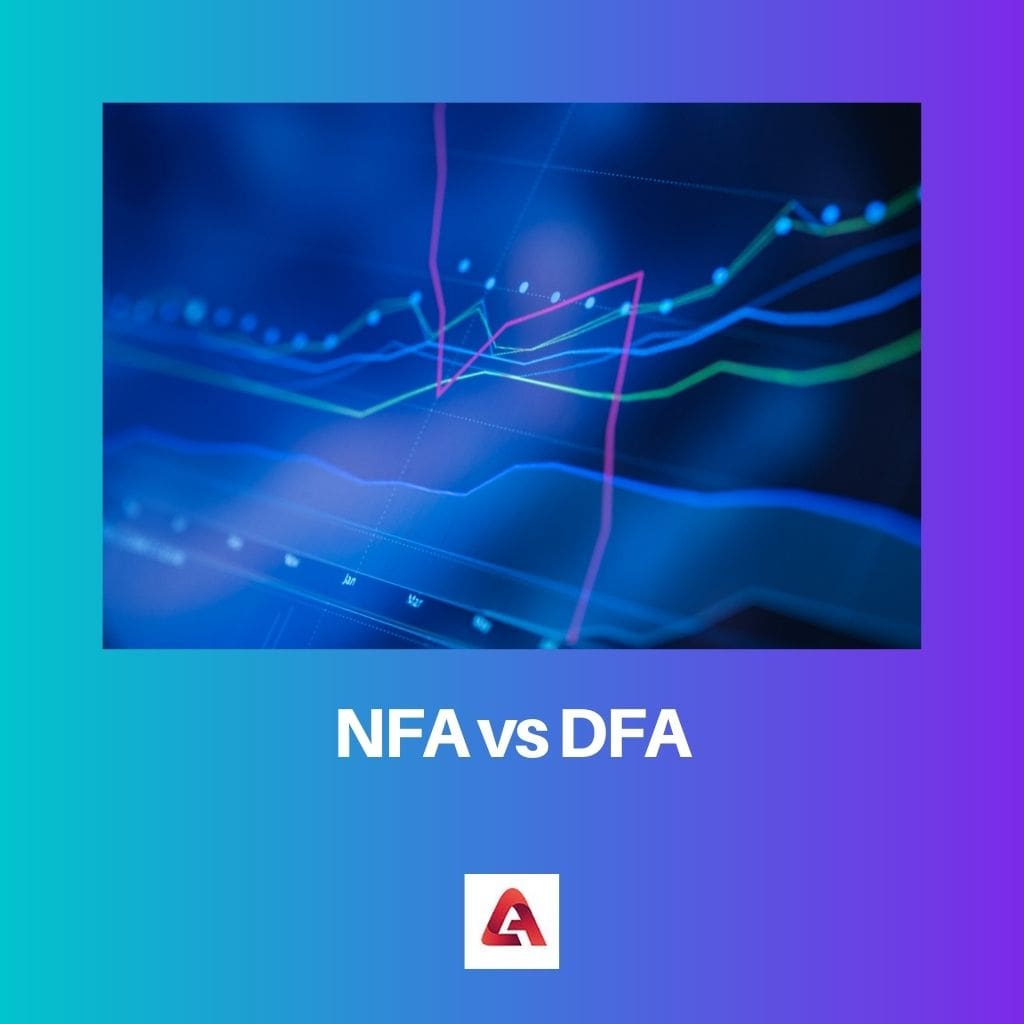Nondeterministic Finite Automata (NFA) allow multiple possible transitions for a given input symbol from a state, enabling simpler representations but potentially more complex algorithms. Deterministic Finite Automata (DFA), on the other hand, have precisely defined transitions for each input symbol, leading to faster processing but requiring more states to represent the same language.
Key Takeaways
- NFAs have multiple possible transitions for a single input symbol, whereas DFAs have only one.
- DFAs can only move from one state to another on input symbols, while NFAs can also do so on empty strings.
- NFAs are less restrictive than DFAs, which makes them easier to design and understand, but harder to implement.
NFA vs. DFA
NFA is a term used in automata theory. NFA stands for Finite Automata and represents a transition diagram where multiple paths can be taken to move from one state to another. DFA stands for Deterministic Finite Automata. It also presents a transition diagram in which only one path can be taken to move from one state to another.

Comparison Table
| Feature | NFA (Non-deterministic Finite Automata) | DFA (Deterministic Finite Automata) |
|---|---|---|
| Determinism | Non-deterministic | Deterministic |
| State Transitions | Can have multiple possible transitions for a single input symbol in a state. | Has only one possible transition for each input symbol in a state. |
| Empty String Transitions | Can handle empty string transitions (ε-transitions). | Cannot handle empty string transitions. |
| Construction | Generally easier to construct. | Generally more difficult to construct. |
| Space Complexity | Requires less space due to potential state sharing. | Requires more space due to unique transitions for each input. |
| Time Complexity | May require more time to process a string due to exploring multiple paths. | Requires less time to process a string due to a single clear path. |
| Equivalence to Regular Expressions | Simpler to convert a regular expression to an NFA. | Can be more complex to convert a regular expression to a DFA. |
| Relationship | All DFAs are also NFAs (a special case). | Not all NFAs are DFAs. |
What is NFA?
A Nondeterministic Finite Automaton (NFA) is a mathematical model used to describe computation, particularly in the context of recognizing languages defined by regular expressions. It consists of a finite set of states, a set of input symbols (alphabet), a transition function, an initial state, and a set of accepting states.
Features
- Nondeterminism: Unlike Deterministic Finite Automata (DFA), an NFA allows multiple possible transitions for a given input symbol from a state. This nondeterminism means that at any given point during the computation, the NFA can be in multiple states simultaneously.
- Epsilon Transitions: NFAs may also include epsilon (ε) transitions, which allow the automaton to move from one state to another without consuming any input symbol. This feature enhances the expressive power of NFAs, enabling them to recognize more languages than DFAs.
- Acceptance: An input string is accepted by an NFA if there exists at least one computation path that leads to an accepting state. This relaxed acceptance criterion contributes to the versatility of NFAs in recognizing various language classes.
Representation and Operations
NFAs can be represented graphically using state diagrams, where nodes represent states, edges represent transitions labeled with input symbols or ε, and double circles denote accepting states. Operations on NFAs include union, concatenation, and closure, facilitating the manipulation and combination of languages represented by NFAs.
What is DFA?
A Deterministic Finite Automaton (DFA) is a mathematical model used for recognizing and accepting languages defined by regular expressions. It comprises a finite set of states, a set of input symbols (alphabet), a transition function, an initial state, and a set of accepting states. Unlike Nondeterministic Finite Automata (NFA), DFAs have precisely defined transitions for each input symbol from each state.
Features
- Determinism: In DFAs, for every state and input symbol, there is precisely one transition leading to another state. This deterministic nature simplifies the computation process, as the next state is uniquely determined by the current state and input symbol.
- No Epsilon Transitions: Unlike NFAs, DFAs do not have epsilon (ε) transitions. Each transition in a DFA must consume an input symbol, ensuring a clear and unambiguous path from the initial state to the accepting states for any input string.
- Acceptance: An input string is accepted by a DFA if there exists a unique computation path that leads from the initial state to an accepting state, where all input symbols are consumed.
Representation and Operations
DFAs can be represented graphically using state diagrams, similar to NFAs. Each state is depicted as a node, transitions are represented by edges labeled with input symbols, and accepting states are denoted by double circles. DFAs support operations such as union, concatenation, and closure, allowing for the manipulation and combination of languages represented by DFAs.
Main Differences Between NFA and DFA
- Transition Behavior:
- NFA: Allows multiple possible transitions for a given input symbol from a state.
- DFA: Has precisely defined transitions for each input symbol from each state.
- Nondeterminism:
- NFA: Exhibits nondeterminism, where multiple paths can be explored simultaneously during computation.
- DFA: Is deterministic, meaning there is only one possible transition for each input symbol from each state.
- Acceptance Criteria:
- NFA: Accepts an input string if there exists at least one computation path leading to an accepting state.
- DFA: Accepts an input string if there exists a unique computation path from the initial state to an accepting state, consuming all input symbols.
- Epsilon Transitions:
- NFA: Can include epsilon (ε) transitions, allowing movement between states without consuming input symbols.
- DFA: Does not have epsilon transitions; each transition consumes an input symbol.
- Computational Complexity:
- NFA: Typically involves more complex algorithms for language recognition due to nondeterminism.
- DFA: Offers efficient algorithms for language recognition, making it preferable for practical applications requiring fast processing.




